If you want to make caramel sauce from scratch, this post has all my tips and a short video. It's luscious and buttery, with a rich amber color that enhances every dessert it’s drizzled on. It has a velvety texture (true!) and can be stored in the refrigerator for months.
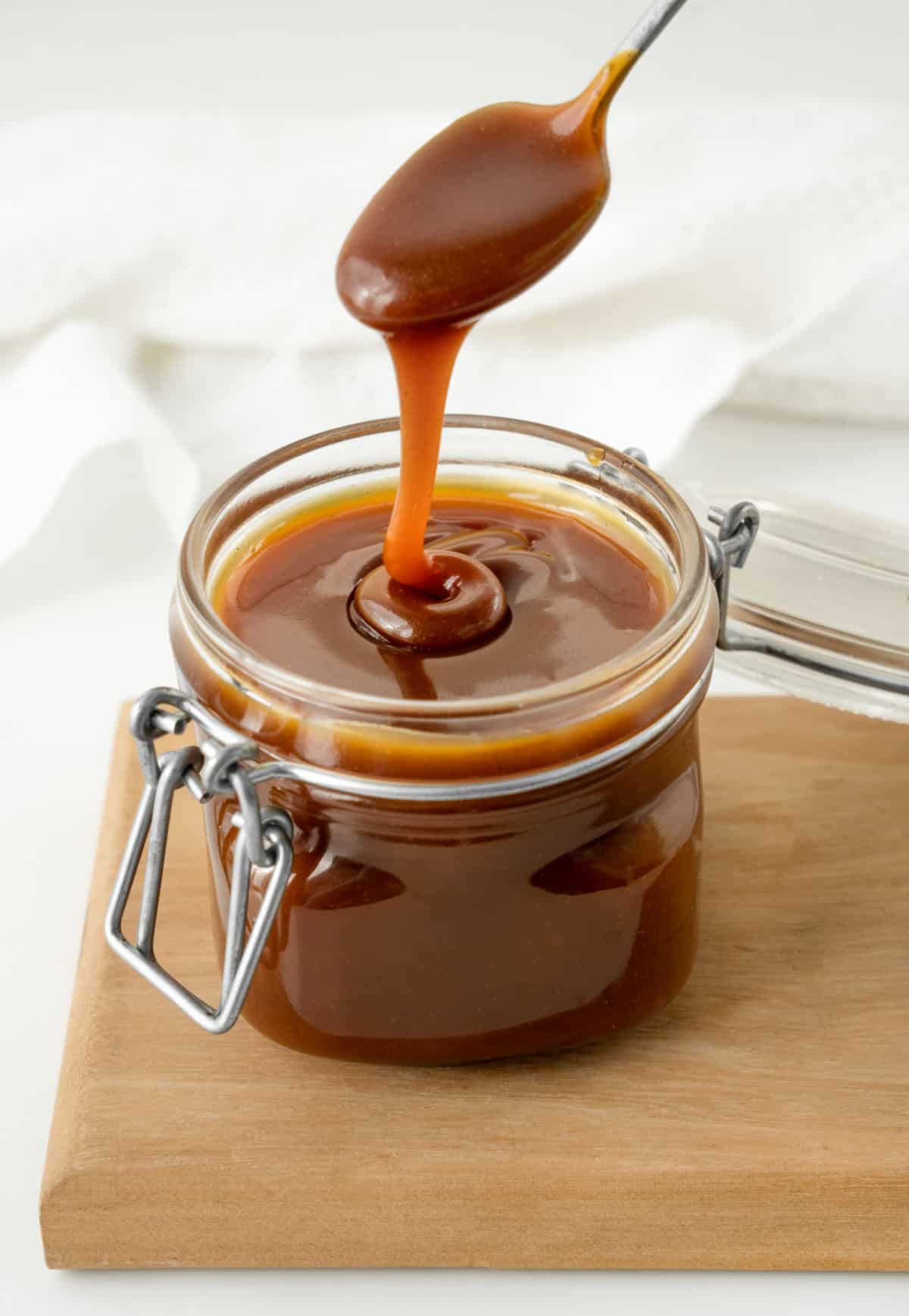
Just 4-ingredients
This sauce perfectly balances rich and buttery with a subtle undertone of toasty caramelized sugar.
It's meant to be drizzled over your favorite treats and desserts, and really takes them from good to great.
Homemade: the process of slowly caramelizing sugar and combining it with butter and cream results in a sauce with a depth of flavor and authenticity that can be tailored to your preferences. Making caramel sauce from scratch guarantees a superior taste and provides the satisfaction of creating a gourmet condiment in the comfort of your kitchen.
Uses for caramel sauce
Some fruits, like apples and pears, this is the drizzle of your dreams. It's hard to go wrong.
Desserts:
- Ice cream: a classic pairing that never fails! Besides the classic vanilla ice cream,
- Cakes and cupcakes: Apple and pear cakes are no-brainers, like this moist Irish apple cake, but innovate with other less-common flavors, like coconut pecan cake or roasted grape cake.
- Pies and tarts: It's especially good with French-style thin tarts, like a simple apple galette or pear almond tart, but also pies if you have a sweet tooth, like an apple pie with an easy crust or apple pie bars.
- Cheesecake: It's perfect for classic, plain ones and also with chocolate and apple cheesecakes.
- Brownies: chocolate and caramel are fantastic together. Serve warm brownie squares with ice cream and a swirl of gooey caramel, and watch the effect on people.
- Old-fashioned puddings, like rice or traditional bread pudding.
- Crumbles, cobblers and dump cakes: Classics like fresh apple cobbler always work. I also like it with peaches—not common, but really good if you ask me.
Other:
- Snacks like popcorn and apple wedges (image below).
- Coffee and hot chocolate, especially lattes or ones with whipped cream.
- Yogurt and parfaits.
- Baked oatmeal and porridge.
- Pancakes and waffles.
This sweet sauce is not limited to dessert applications alone; used wisely, it can be a creative addition to savory dishes like roasted vegetables or grilled meats.
FAQ
Caramel sauce is made by melting sugar, while butterscotch sauce is made with brown sugar and butter. Butterscotch has a distinct flavor due to the molasses in brown sugar.
Yes, you can! Place it in a sealed, freezer-safe container for up to three months. Thaw it in the refrigerator overnight and reheat gently before use. But it stays well in the fridge for months (due to the high sugar content).
While it's a traditional ingredient and a must to create a sauce, you can experiment using alternatives like coconut cream for a dairy-free version or condensed milk.
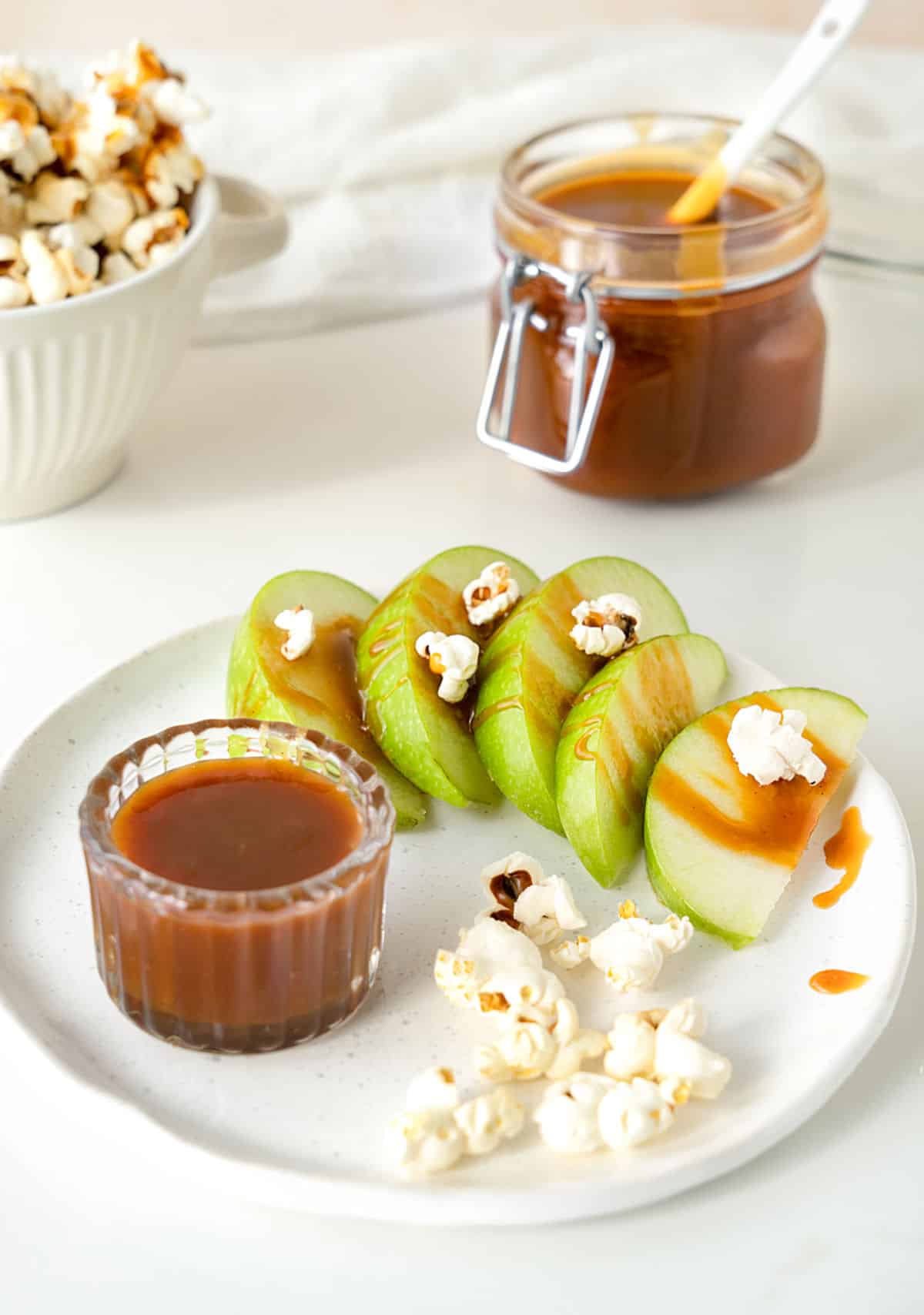
Ingredient Notes
Quantities are listed in the recipe card towards the end of this post. The Ingredients page has more details and lists the brands we use.
- White, granulated sugar: an essential ingredient that can't be substituted.
- Cream: I use heavy cream because I usually have it at home, but heavy whipping and double cream also work.
- Salt: I use kosher salt or sea salt (usually Maldon salt flakes). They're not as strong as regular table salt.
How to make caramel sauce
- Organization: read the recipe first and ensure you have ingredients at the correct temperature, utensils and equipment needed, and enough workspace. This will make the process so much easier.
- Medium saucepan with high sides: this is important as the caramel will creep up the sides during different stages of the recipe.
- Pastry brush: have it close by and dip it lightly in water to brush away the sides of the pan if the sugar creeps up. This will help to avoid crystallization.
- Watch this short video for homemade caramel.
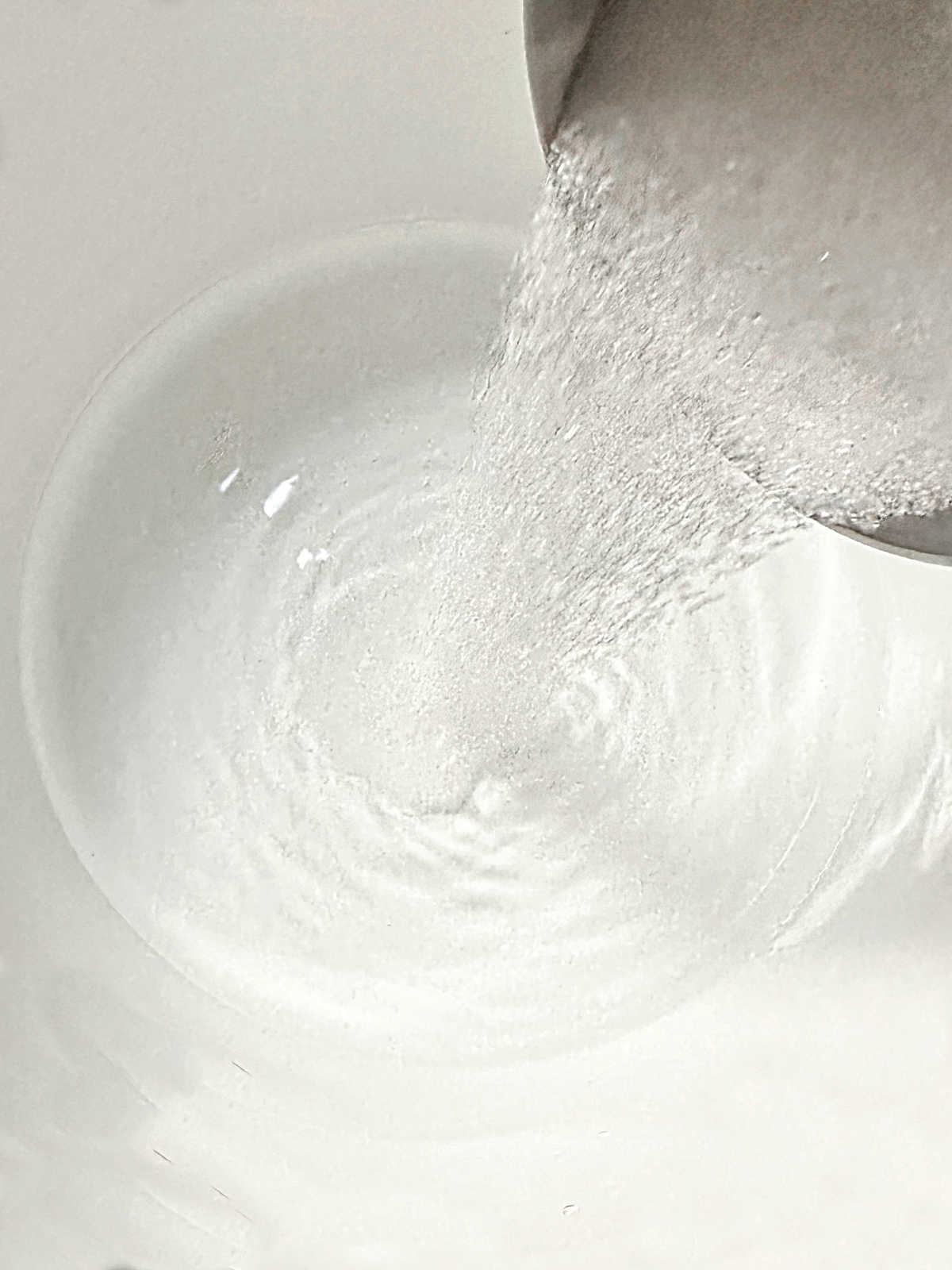
- Add the water and stir in the sugar until it dissolves. Only regular, white granulated sugar works for this recipe.

- It's essential not to stir the mixture after the sugar has dissolved. However, you can swirl the pan so the caramel cooks more evenly.
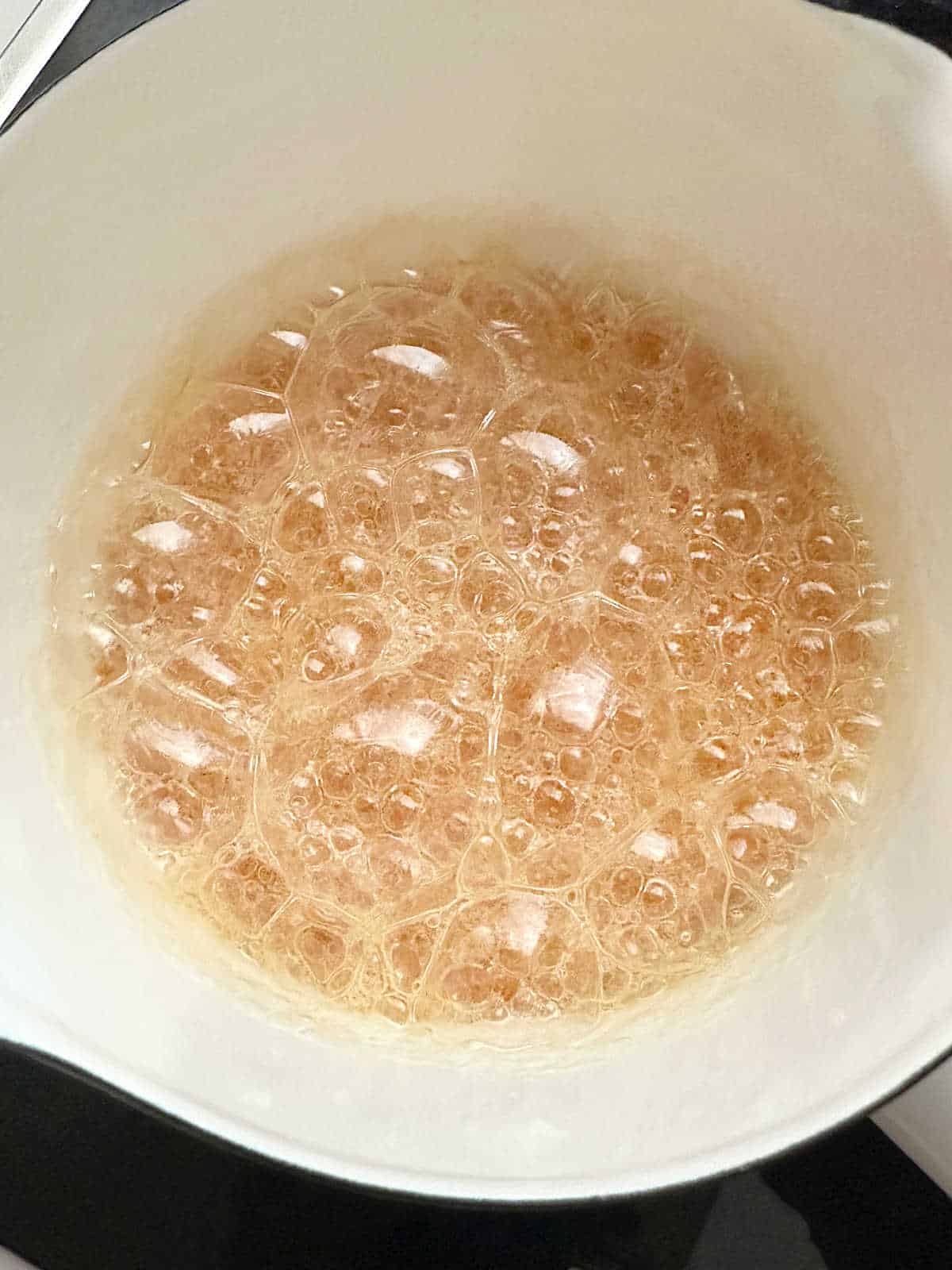
- The water and sugar will go through different stages, forming very large bubbles and foaming. At some point, you'll see it begins to color.
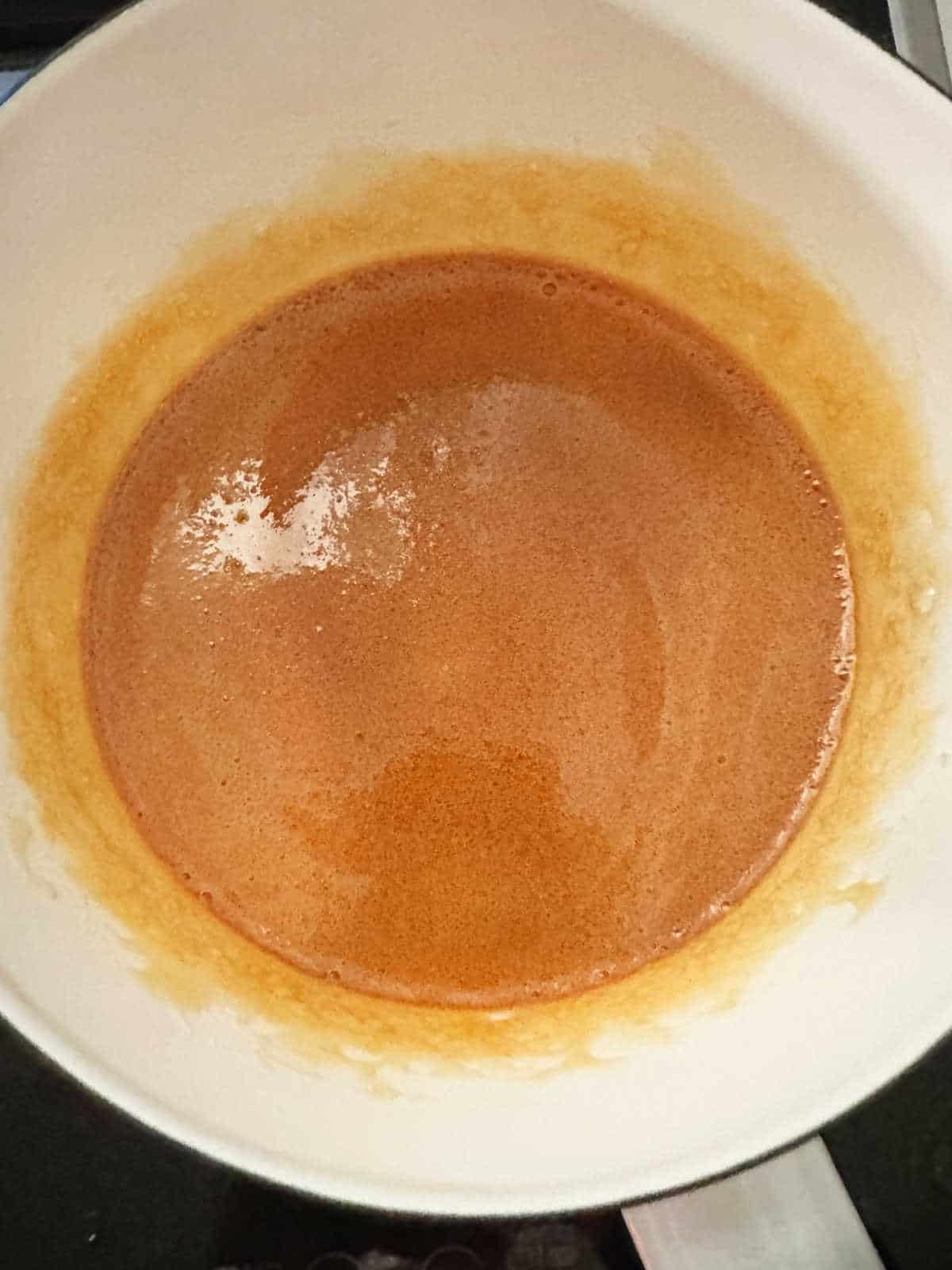
- When it's amber-colored, remove from the heat and add the rest of the ingredients as instructed in the recipe card.
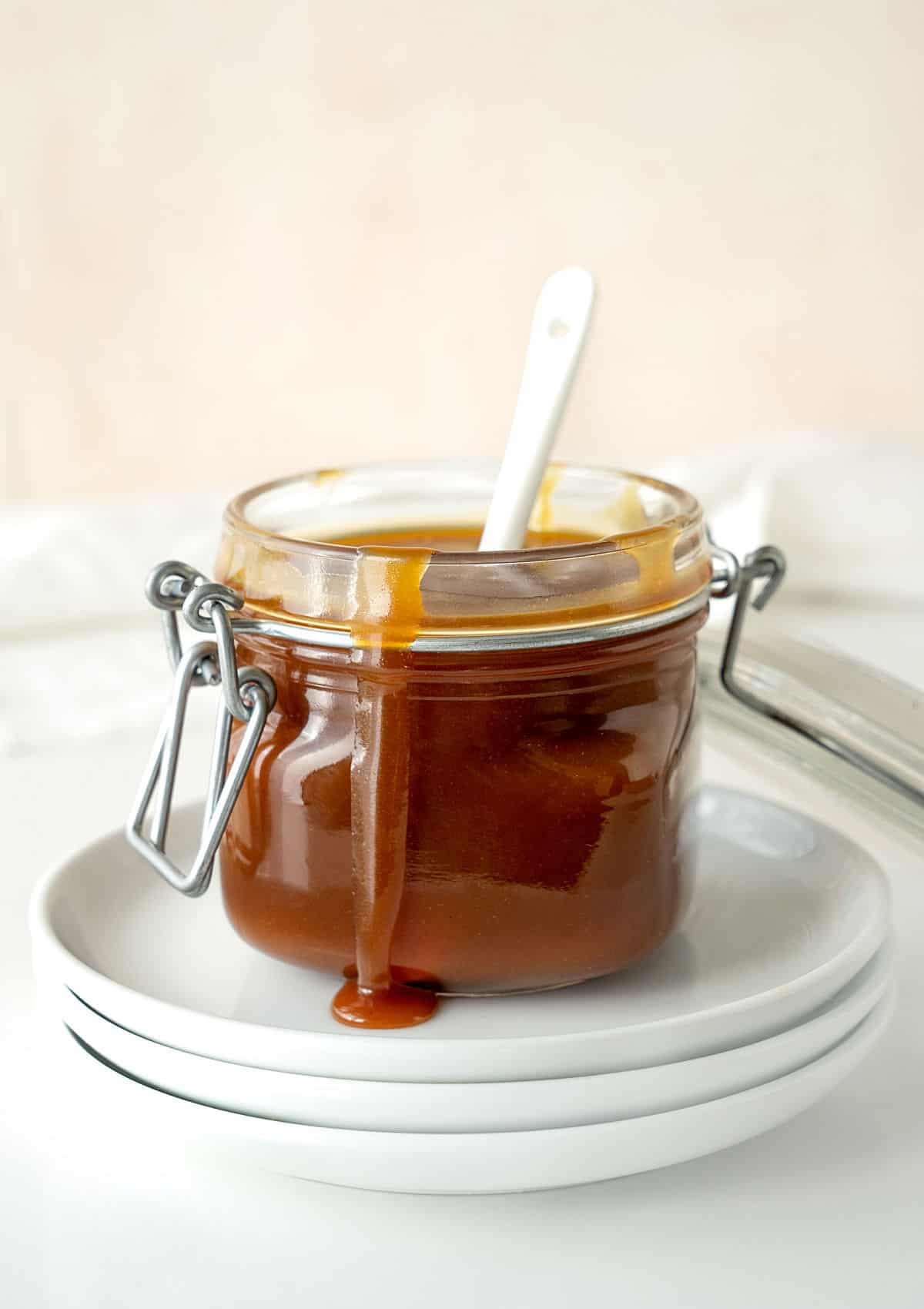
Storage
- Cool before storing: allow the caramel sauce to cool to room temperature before storing it. This helps prevent condensation inside the storage container, which can lead to a watery consistency.
- Choose the right container: store caramel sauce in a clean, airtight container to prevent exposure to air, which can cause the sauce to crystallize or harden. Glass jars or plastic containers with tight-fitting lids work well.
- Refrigerate it: it keeps for months.
Kitchen notes
- Organization: read the recipe first and ensure you have ingredients at the correct temperature, equipment, and enough workspace. This will make the process so much easier.
- Patience is key – low and slow: caramelizing sugar requires patience. Use low to medium heat to melt the sugar gradually. Rushing the process can lead to uneven caramelization and a burnt taste. Stir the sugar occasionally to ensure even melting.
- Avoid stirring once boiling begins: once the sugar has completely melted and starts to boil, avoid stirring. Instead, gently swirl the pan to ensure even cooking. Stirring can cause the sugar to crystallize, leading to a grainy texture in the finished caramel.
- Be cautious with hot liquids: when adding hot cream or butter to the caramelized sugar, do it slowly and carefully to avoid splattering. The mixture will bubble up vigorously, so use caution to prevent burns. If you're concerned about the heat, let the caramel cool for a minute before adding the cream and butter.
- Control the thickness with cream ratio: adjust the thickness of your caramel sauce by controlling the ratio of sugar to cream. For a thicker sauce, use less cream and add more for a thinner consistency. Experiment to find the balance that suits your preference.
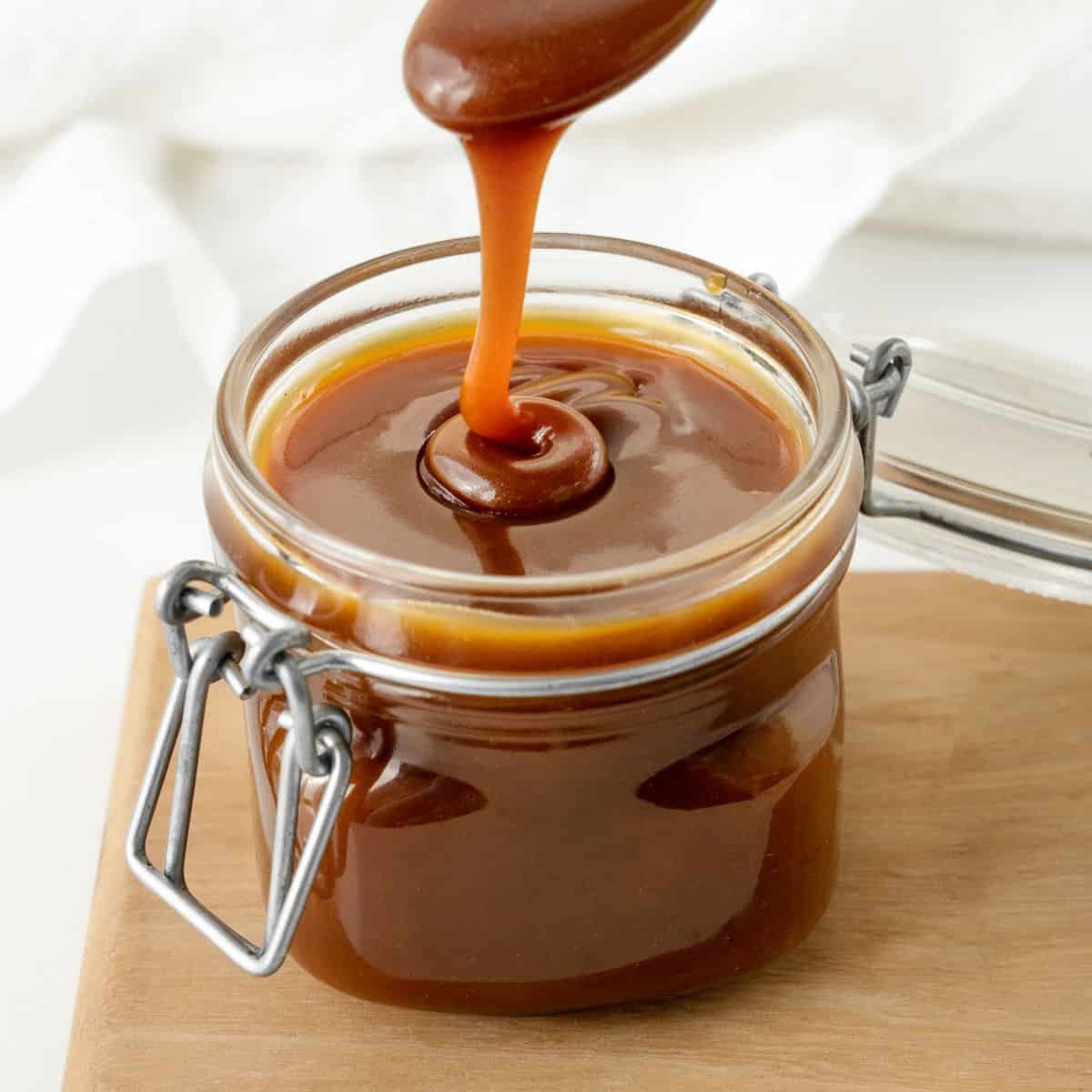
One last thing
If you made this recipe and loved it, you can comment below and leave a five-star ⭐️ review. Also, if you had issues, let me know so we can troubleshoot together. I appreciate honest feedback and suggestions.
You can also subscribe to our FREE email series 'Baking the Best' and our regular newsletter. Or follow and save my recipes on Pinterest.
As an Amazon Associate, I earn from qualifying purchases. Read my disclosure policy.

Homemade Caramel Sauce
Ingredients
- 1 cup sugar
- ¼ cup water
- 3 tablespoons unsalted butter, at room temperature
- ½ cup heavy cream
- pinch of salt
- drops of vanilla extract, optional
Instructions
- Place sugar in a medium saucepan and add water. Moisten all of the sugar to make an even layer.
- Cook over medium-low heat, stirring occasionally until the preparation turns clear and the sugar dissolves. This might take several minutes.
- If any sugar crystals form on the sides of the saucepan, lightly dip a pastry brush in water and use it to sweep away sugar crystals without touching the caramel.
- Don’t stir again once it starts to bubble and is clear. Let it cook until it turns amber-colored, swirling the pan occasionally to avoid it burning in spots. Be careful not to burn it.
- When it’s a deep amber, remove from the heat and add the butter in small pieces. Stir to melt completely.
- Add the cream slowly, whisking constantly until it’s fully integrated.
- Add the salt and vanilla. Mix to combine. Don't taste it; you'll burn your mouth. Let it cool first.
- Cool in the pan for about 5-10 minutes and then pour into the glass jar you’ll be storing it in. Let cool completely before sealing and refrigerating it for up to a month.


Rate and review this recipe